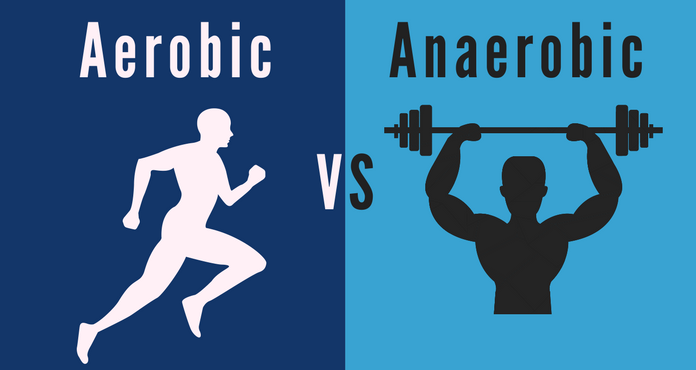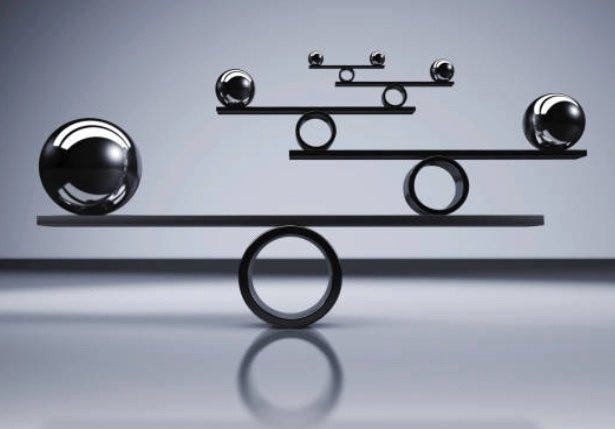FTP Measures Aerobic - What About Anaerobic?
Need some extra power?
In cycling, aerobic power, measured by FTP, is not optional, it’s what gets you in the game. But if you want to excel in MTB, cyclo-cross, or find yourself periodically get dropped in sprints with your buddies, you might need to build your anaerobic power.
FTP, i.e. Functional Threshold Power, has become the most common term in performance cycling. It is great to have a single term to represent your cycling fitness level. It’s very useful that it allows AEROBIC training to be easily and even automatically adjusted to the right intensity.


The other energy system — Anaerobic
A deeper understanding of your fitness requires looking at both your aerobic and anaerobic abilities. If you take a ramp test, for example, your anaerobic power might noticeably affect your test, throwing off your FTP a little.
Discussing and thinking about anaerobic capacity seems to be scary for many cyclists, not the anaerobic training itself, but measuring anaerobic seems to be the scary part.
Measuring your anaerobic can be as simple as measuring your FTP and provide valuable insight and give you motivation when your FTP has flatlined.
Burning Matches
Cyclists like to call it burning matches, you only have so many to burn before your energy level crashes. The number of matches you have is your Anaerobic Work Capacity (AWC or W’) We will use the term W’ (pronounced W-Prime).
Monitoring your personal W’ will give you insight to your Anaerobic Work Capacity. Weight lifting is anaerobic and both it and anaerobic cycling follow similar principals. Imagine going to the gym, lifting weights but not tracking or even measuring your progress. Just grab a random set of weights and lift them a random number of times. Similar to lifting weights, building your W’ requires training close to or to failure. Doing the correct amount of exercise will provide more predictable results, allowing your body to repair and build itself. We could all use a few more matches.



Light bulbs and your Electricity bill
We have been comfortable using watts for lightbulbs and hair-dryers for a long time, and with the popularity of power meters we are comfortable using watts on our bikes. The watts measurement is instantaneous, it has no time. You can say “watts for 10-seconds” but watts themselves have no time. So when talking about energy, we need to include time. This unit of measurement is kilojoules (kJ). A joule is 1-watt for 1-second. Kilojoules are on your electricity bill. You measure your W’ in kilojoules. You likely have a W’ between 5–40kJ. That is a fixed number of watts for a fixed amount of time.
W’s amazing cousin
So one of the incredible benefits of knowing your W’ along with your FTP is with our new feature in our workout creator, you can find or design intervals that precisely fit your fitness profile.
For example, you are doing 2-minute VO2Max intervals. How long should the rests be? And should the intervals be at 120% or 125%? Welcome to W’ Balance (W’Bal) this is W’s perfect cousin. Scientific studies have show that W’Bal can accurately predict when you will hit failure. It’s sounds scary, but it is surprisingly simple. We will explain how it works in part #3 of this series.

How to calculate your W’
Related Articles
How To Determine Your W'
How to determine your W’ (missing calculator) You must do these 2-things Ride as hard as you can for approximately 3-...
How To Determine Your W'
How to determine your W’ (missing calculator) You must do these 2-things Ride as hard as you can for approximately 3-...
W' Is Not Everything: Good Over-Under Examples
W’ Is Not… (With good over-under examples) W’ does not tell you how hard a workout is. A 20-minute workout close to FTP ...
Ready to Optimize Your Training?
Join thousands of cyclists using TrainerDay to reach their performance goals.
Start Training with TrainerDay
